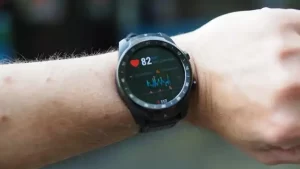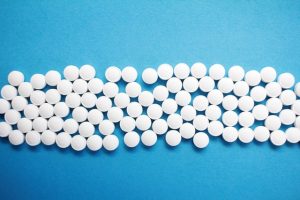Precautions for Virus Inactivation
Precautions for Virus Inactivation
Precautions for virus inactivation. Virus removal is a fundamental aspect of virus safety in biopharmaceutical products.
Regulatory agencies around the world require biopharmaceutical companies to properly isolate their manufacturing processes to reduce the risk of residual contamination from production process steps or product batches and cross-contamination between products produced in the same factory.
The regulations are ambiguous when defining “appropriate”, allowing biopharmaceutical companies to interpret regulatory requirements and define their own virus removal processes and isolation strategies.
Considering the differences between manufacturing processes and facilities that accommodate such operations, it is not surprising to see a series of isolation strategies adopted by different companies.

Here, we provide a series of actionable virus isolation strategies that can be considered when designing biopharmaceutical facilities. The possibility of cross-contamination caused by the CIP system used in many multi-systems is also discussed.
Monoclonal antibodies (MAb) have proven to be valuable biological drugs for the treatment of many diseases. These complex molecules are usually produced by recombinant mammalian cell lines, such as Chinese Hamster Ovary (CHO) cells expressing selected antibodies in culture. Many of these cell lines express retrovirus-like particles (RVLP). They are secreted into the culture medium and are considered to be process-related impurities.
Current regulatory guidelines require the removal of RVLP from the final purified MAb product, and its efficacy is similar to that of infectious viruses. According to the ICH Q5A document, the requirement for virus removal capability is: “The entire purification process should be able to eliminate more viruses than is estimated to be present in a single dose of untreated samples.” The guide also provides an example of how to calculate the safety threshold for potential RVLP per dose of a biopharmaceutical product, expressed in estimated particles per dose (EPD).
The result of this calculation is that there is one possible particle in every 10 doses, and this limit is now considered the minimum target for RVLP removal. RVLP can be infectious or non-infectious, and murine leukemia virus (MuLV) is usually used as a model.
A typical monoclonal antibody production process includes the steps of lowering the pH of the intermediate sample to 3.6-3.7. This weakly acidic condition has a strong inactivation effect on many enveloped viruses (including MuLV) and therefore plays an important role in reducing viruses. However, the process is very sensitive to changes: when the pH is greater than 3.8, the inactivation is significantly reduced, and when the pH is less than 3.6, aggregates are formed.
The virus inactivation process is usually carried out in a stirred tank, where the pH is controlled, and the time and temperature are maintained. After adjusting the pH to the required acid value, the technician will incubate the contents of the tank for a specified time at a specified temperature to achieve effective virus inactivation. After that, the solution is neutralized, and the adjustment of the next treatment is carried out as needed.
During the inactivation process, it is important that all materials in the batch must reach the target pH within the specified duration. Otherwise, certain materials may carry the still active RVLP downstream (residue), thereby compromising the required virus reduction rate. Sources of residues include:
- Use incorrect or dirty transmission line
- Use the same equipment before and after inactivation
- The production of splashes or aerosols that may re-enter the process
- There is liquid in the dead space of the container (for example, sampling port, instrument port and nozzle).
Biopharmaceutical manufacturers have mitigated these risks by implementing a dual container design: lower the pH of the process solution in the first container and transfer its contents to the second container for incubation. This ensures that all materials in the second container have reached the required pH.
This is recognized by companies and regulatory agencies. Many regulatory guidelines including ICH Q7 have addressed the risk of residual contamination virus removal: “Appropriate precautions should be taken to prevent the removal of the virus from before the virus to after the virus. Potential viral contamination of the inactivation step.” The term appropriate precautions deserves further examination. The effect of residues on virus removal can be calculated using a simple mathematical model. Such calculations are useful for quantifying how much residue will impair the virus clearance rate in a specific step (such as low pH maintenance). Based on such calculations, it can be assessed whether “appropriate precautions” have been taken to prevent residues, otherwise the virus removal rate will be compromised. It is important to note that this calculation is only meaningful if there is no virus transmission (for example, downstream operations without host cells).
Below, we show an example of how to combine mathematical calculations with the failure mode and effect analysis (FMEA) of the low pH inactivation step in the MAb purification process. If other types of chemical inactivators (for example, solvents/detergents) are used, the same considerations can be used to deal with residues.
Process Description
In a typical downstream process, the MAb is first captured by protein A chromatography media binding. The MAb is then eluted from the trap column with a low pH elution buffer. After elution, adjust the pH of the eluate to 3.6–3.7, and then keep it for one hour. The low pH inactivation step is terminated by neutralizing the pH of the solution in preparation for subsequent purification steps, such as ion exchange chromatography (IEC). Figure 1 shows a single-use container and a traditional multiple-use container that can be used for the low pH virus inactivation step.
When a multi-purpose container is used, the eluate from the protein A column is carefully transported into the virus inactivation container through the inlet tube or J tube (the “dipping tube” in Figure 1) close to the container wall, thereby minimizing Foam to prevent splashing. During the titration process, the materials in the container are continuously mixed to ensure uniformity (usually during the inactivation period). The usual holding time is one hour later, neutralize the low pH solution and prepare for subsequent purification. During the incubation, the temperature and pH will be monitored to ensure effective virus inactivation. Modern technology allows the complete inactivation process to be performed in a closed process, including all transfer, monitoring, mixing, sampling and titration steps.
For our purposes, we assume a model in which the protein A eluate volume before the inactivation step (Vbefore) is 400L, and the MuLV reduction factor of the low pH inactivation step (RFlab) is 5log.
Critical potential residue calculation
Based on mathematical models proposed by scientists. It is possible to calculate the volume of potential residues (VCo) that may affect inactivation in a low pH step like the above container:
VCo = 400L÷10 5 =4mL
Therefore, if> 4 mL of the pre-inactivation solution is transferred to the post-inactivation solution, the virus reduction in the low pH step will be impaired, thereby affecting the safety level of the drug product (RVLP/dose). This phenomenon may occur if the 4mL does not pass the low pH treatment somewhere in the tank (for example, if the pH remains above 3.8) and there is no longer a distance to transfer the “MAB” solution.
The effect of failure mode on virus removal
The failure modes that we focus on related to the process separation between the materials before and after inactivation do not include key virus inactivation parameters such as pH, temperature, mixing, and buffer preparation. In effective process isolation (as opposed to room isolation), all inactivated substances have been successfully separated from the non-inactivated solution. Next is a systematic review of the different elements in the inactivation process, and the possibility of separation failure related to these elements. Note that most of the biological treatment equipment elements mentioned below are discussed in the American Society of Mechanical Engineers (ASME BPE) biological treatment equipment standards.
The inlet pipe of the storage tank should be wide enough so that all the eluate from the protein A capture step is transferred to the storage tank. If a narrow inlet tube is used, some eluent may remain in the tube (for example, by capillary action). During or after the holding period, such substances may enter the storage tank due to interference. The possibility of fluid retention in nozzles, liquid inlets (large containers >1000 L) or head flanges (containers <2000 L), spray devices, dip tubes, and agitator brackets mounted on the top should also be considered.
Small mobile storage tanks usually connect the lower part to the top (Figure 3). Normally, the component will not be immersed in water, so it may happen that the liquid hold-up of the eluent will not be exposed to low pH in this area. For example, if the welding edge (marked “6” in Figure 3) is not completely smooth, liquid will enter and be retained by capillary action. After the virus is inactivated, any untreated process material captured before or in the O-ring recess or O-ring recess (marked as “7” in Figure 3) may re-enter the process stream and endanger The security of the virus. Mitigation measures can include ensuring that untreated materials do not enter the assembly point, filling the tank above that point, flushing components with pH-adjusted materials, or redesigning the tank components.
Outlet valve:
After the low pH inactivation is completed, the material in the tank is transferred to the next downstream operation, which is usually a chromatographic step. This transfer is usually done through an outlet valve at the bottom of the tank. The design of this valve may have a profound impact on the safety of the virus.
The valve on the left side of Figure 4 is designed as a bagless structure. When the tank is stirred, the volume above the diaphragm will also be effectively mixed with the materials in the tank. In contrast, in the design example on the right side of Figure 4, the valve is placed on the outlet pipe, resulting in a smaller hold-up volume between the mixing tank and the valve. Even intensive mixing of the contents of the tank is unlikely to ensure adequate mixing with the contents of the damn leg area. Therefore, the material in this bag can escape inactivation. The capacity of such a pocket can easily reach several milliliters. Due to its location, when the material in the tank is transferred to the next manufacturing process step, this material will definitely move downstream after neutralization.
If this pit cannot be eliminated, a possible mitigation measure is to recirculate the conditioned monoclonal antibody solution through the outlet, and then recirculate back to the storage tank through the inlet. This will eliminate the bag effect and ensure that all MAb solutions reach the target acidity. Another mitigation method is to use online pH adjustment to ensure that all materials entering the tank (and its container) are pH adjusted and all viruses are inactivated. Therefore, the two exit designs shown in Figure 4 can be used, but other measures may need to be taken to reduce the risk of detention.
Side accessories:
When steel storage tanks are used, biopharmaceutical process engineers will choose their size to ensure the smallest headspace and thus the smallest non-submerged surface area. A certain amount of water can sit on the upper side wall of the tank, lid, spray ball or other area above the liquid surface, and the substance can escape the virus inactivation. If such materials reenter the process stream after the low pH treatment, the uninactivated virus will be reintroduced into the solution. Depending on the design of the tank, this volume may be large enough to impair virus removal capabilities. The worst case will be the use of a large water tank with a small workload. Therefore, this failure mode should be properly considered.
Temperature and pH probe:
The correct temperature and pH are important to ensure effective virus inactivation. Therefore, two parameters are continuously measured during the incubation. Usually, both probes are permanently installed during the incubation process and remain in contact with the process material. There should be no relevant pockets that will not reach the target pH and/or temperature. Figures 5a and 5b depict different thermowell designs. Careful consideration should be given to the distance between the vessel wall and the flange, as well as the diameter of the casing and the placed casing. We must ensure that all liquids are mixed correctly. Note that similar considerations apply to all mounts, even unused mounts.
A different approach is to use the same pH probe at t=0 and then verify the correct pH at the end of the incubation period. In this case, the operator should ensure that at the end of the culture, no material on the electrode surface (measured from t=0) will be reintroduced into the water tank.
These examples are used to illustrate some relevant considerations regarding the residual risk of side wall accessories (such as temperature or pH sensors). They are just examples. Each device needs to be inspected in detail. Although thermowells and other ports are necessary for normal operation, such elements also have the potential to compromise virus safety by creating dead spots.
Staff:
Operators often perform manual material transfer and pH adjustment. Therefore, the pre-inactivated material is subject to related contamination (such as glove contamination) and then comes into contact with the process stream after inactivation, thus constituting a failure mode that may prevent certain materials from passing low pH treatment. There is little chance that the gloves will be contaminated with enough material to prevent isolation; however, this can be done by ensuring that the gloves are changed between contact (“work clothes”) before and after inactivation, or by using sterile connectors (rather than flanges) Connector) to minimize contact and easily solve this failure mode.
Aerosol:
If the aerosol is generated before the low pH adjustment, such droplets may persist in the manufacturing plant during the entire virus inactivation period. After neutralizing the process solution, the aerosol droplets may re-enter the process stream and carry potentially uninactivated viruses into the downstream process. However, the volume carried by the aerosol is too low to have any practical impact on the virus inactivation effect of the low pH step. Therefore, in this case, there should be no practical problems in the adjustment tank after this type of aerosol enters after the pH is inactivated.
The right design is the crucial
In the two-stage evaluation, we used mathematical tools to determine the sensitivity of the virus inactivation process to residues. Then, we use the results of the model in the second stage, using FMEA to determine the conditions that may lead to residual process materials related to virus safety. We previously used the same model to study the residues during the use of a single CIP skid at multiple stages of the manufacturing process.
Therefore, we use mathematical models to focus our attention on those failure modes that have the greatest impact on low pH virus inactivation. Which winds can our model distinguish
(source:internet)



